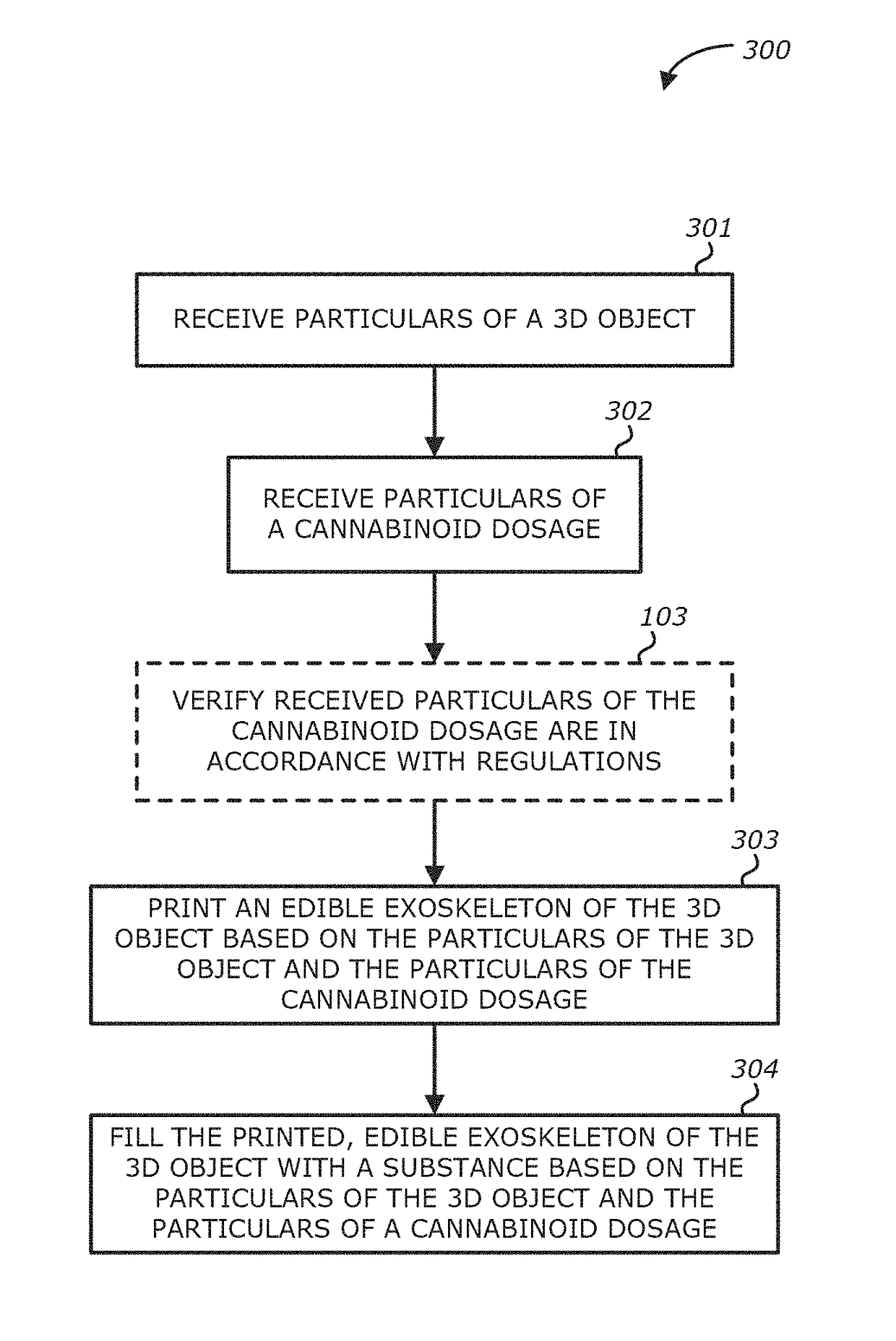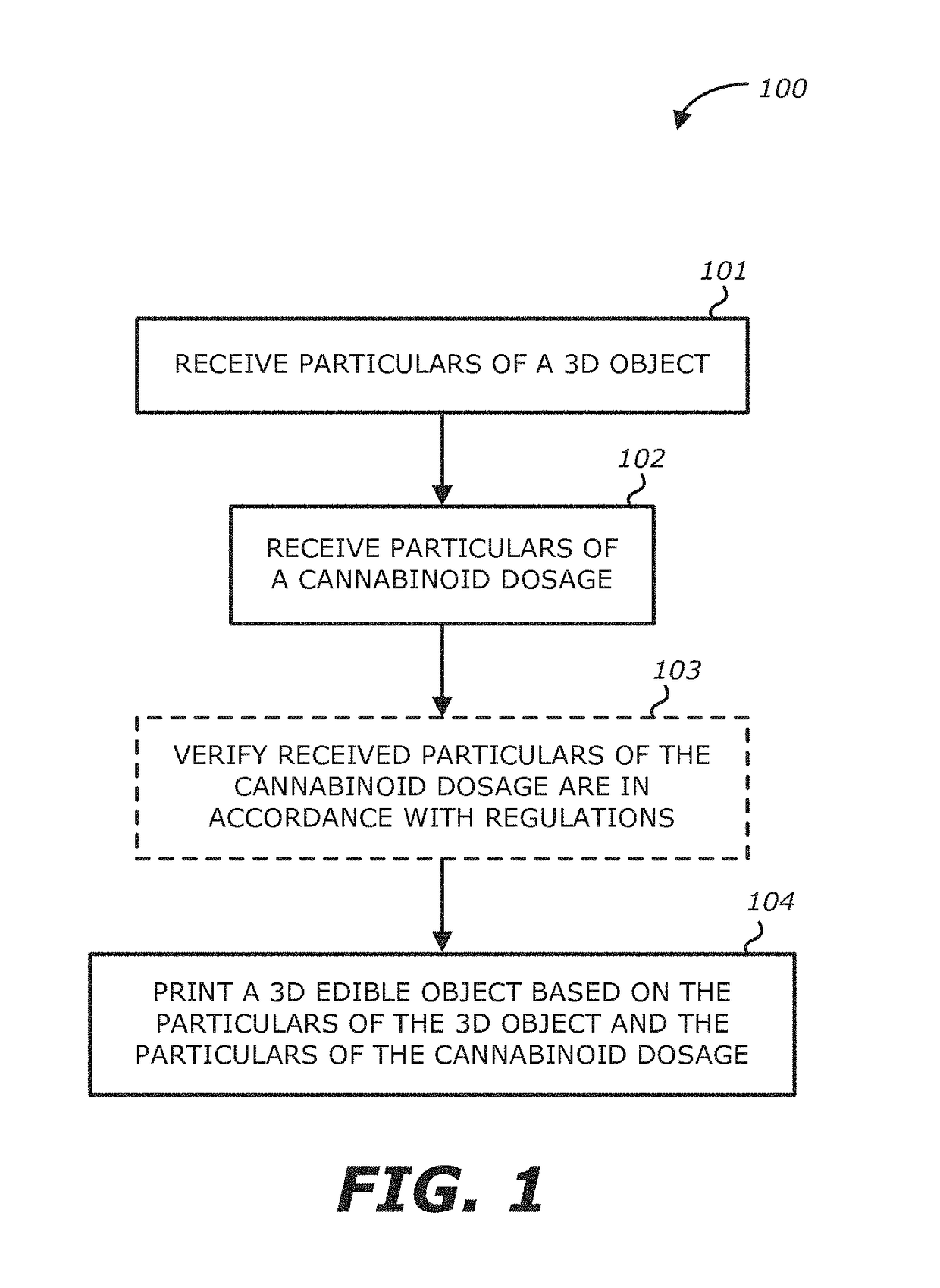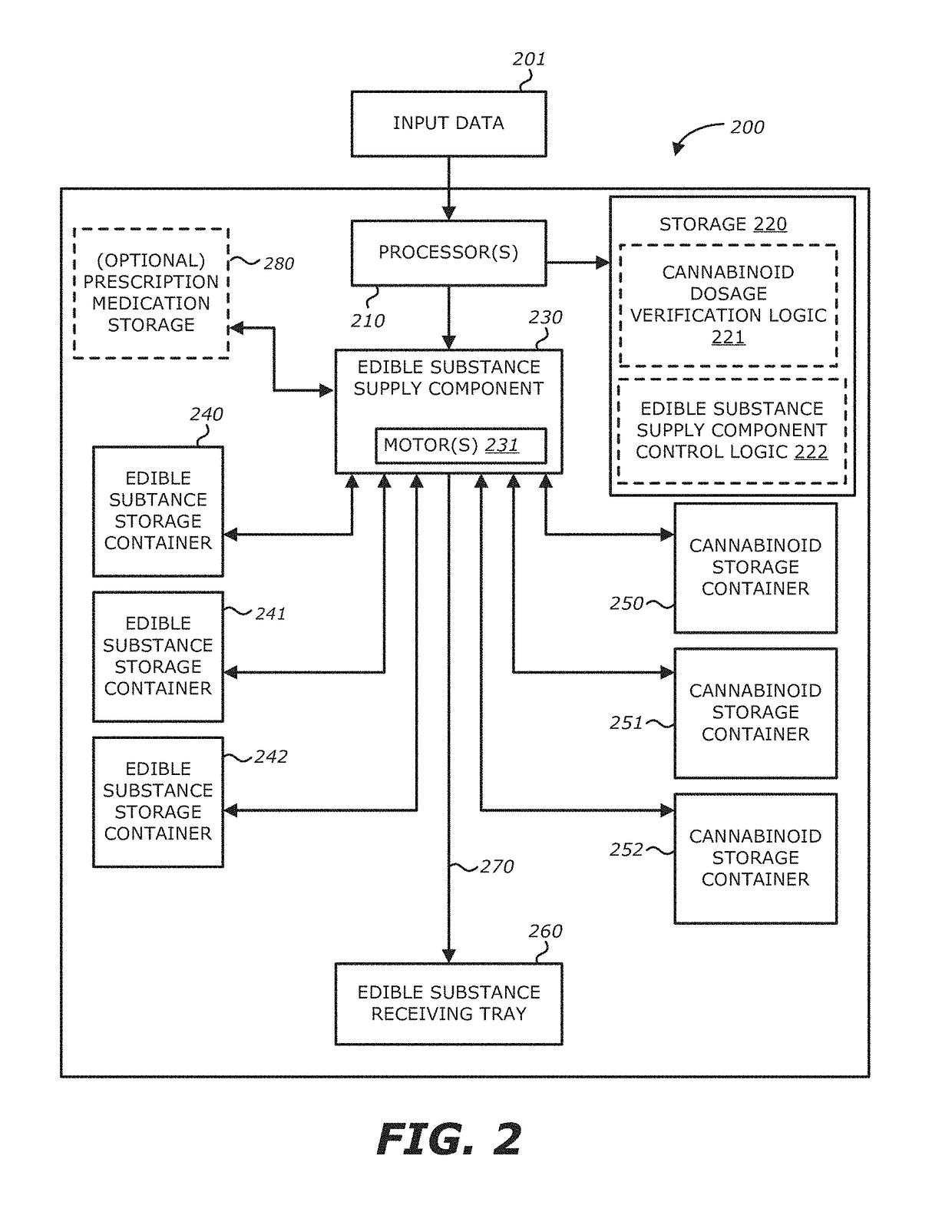Method, system and apparatus for creating 3D-printed edible objects
a technology of edible objects and 3d printing, which is applied in the direction of additive manufacturing processes, food shaping, peptide/protein ingredients, etc., can solve the problems of high cost of 3d printing, general inability to manufacture goods for commercial sale, and inability to print complex 3d edible substances
- Summary
- Abstract
- Description
- Claims
- Application Information
AI Technical Summary
Benefits of technology
Problems solved by technology
Method used
Image
Examples
Embodiment Construction
[0019]Various embodiments of the disclosure relate to a method and system of, and apparatus for, manufacturing a three-dimensional (3D) printed edible object infused with a cannabinoid. The method and apparatus may provide a 3D-printed edible object infused with a cannabinoid and / or a medication to consumers and / or medical patients that is visually appealing having a unique and complex shape. In addition, the 3D-printed edible object may be manufactured to be more palatable due to the ability to print an object resembling any 3D-design having a variety of different tastes. For example, a 3D-printed edible object may take the shape of a dinosaur and taste like a hot dog therefore appeal to children. This may encourage a younger patient at a hospital to consume the 3D-printed edible object infused with a cannabinoid and / or a medication thereby increasing the likelihood that the child will ingest his or her medication.
[0020]Additionally, the 3D-printed edible object may include a 3D-pr...
PUM
| Property | Measurement | Unit |
|---|---|---|
| temperature | aaaaa | aaaaa |
| weight | aaaaa | aaaaa |
| weight | aaaaa | aaaaa |
Abstract
Description
Claims
Application Information
 Login to View More
Login to View More - R&D
- Intellectual Property
- Life Sciences
- Materials
- Tech Scout
- Unparalleled Data Quality
- Higher Quality Content
- 60% Fewer Hallucinations
Browse by: Latest US Patents, China's latest patents, Technical Efficacy Thesaurus, Application Domain, Technology Topic, Popular Technical Reports.
© 2025 PatSnap. All rights reserved.Legal|Privacy policy|Modern Slavery Act Transparency Statement|Sitemap|About US| Contact US: help@patsnap.com



